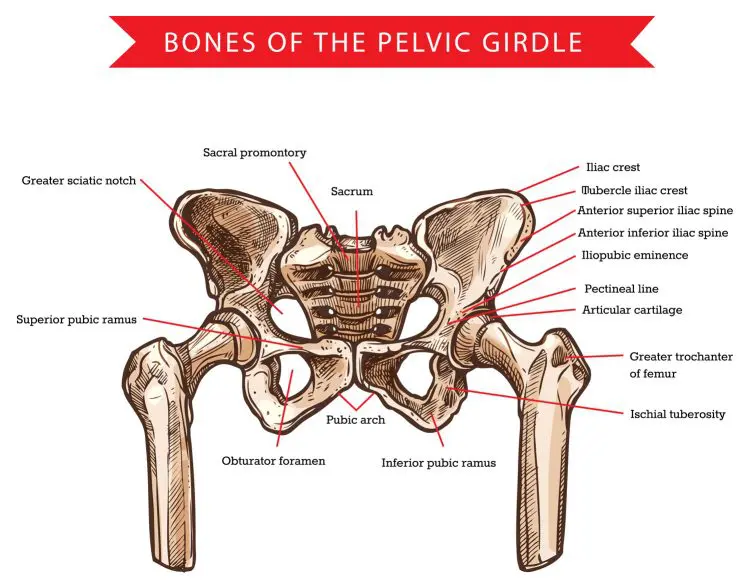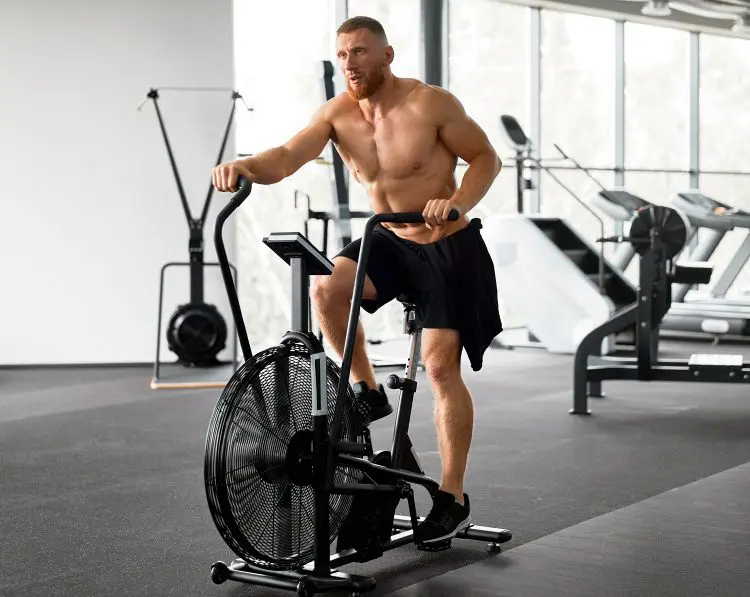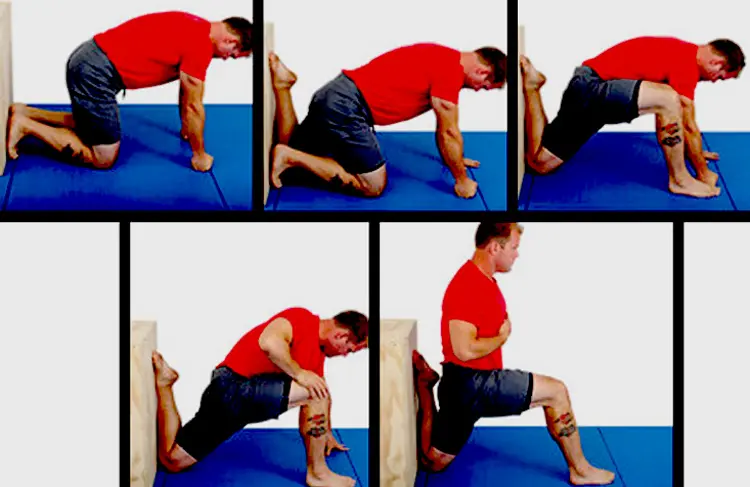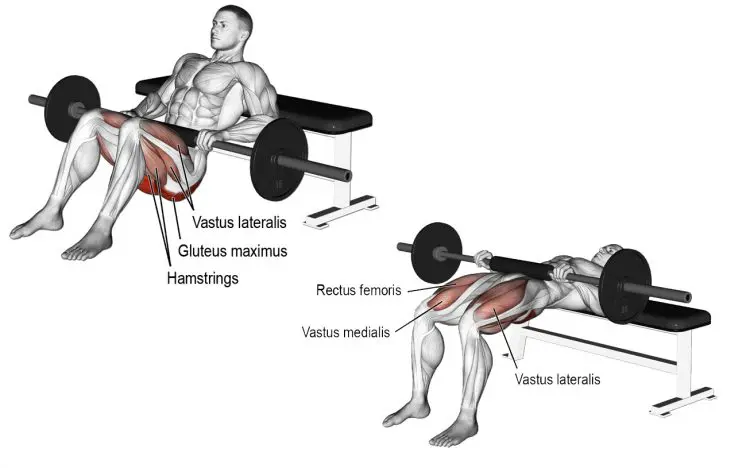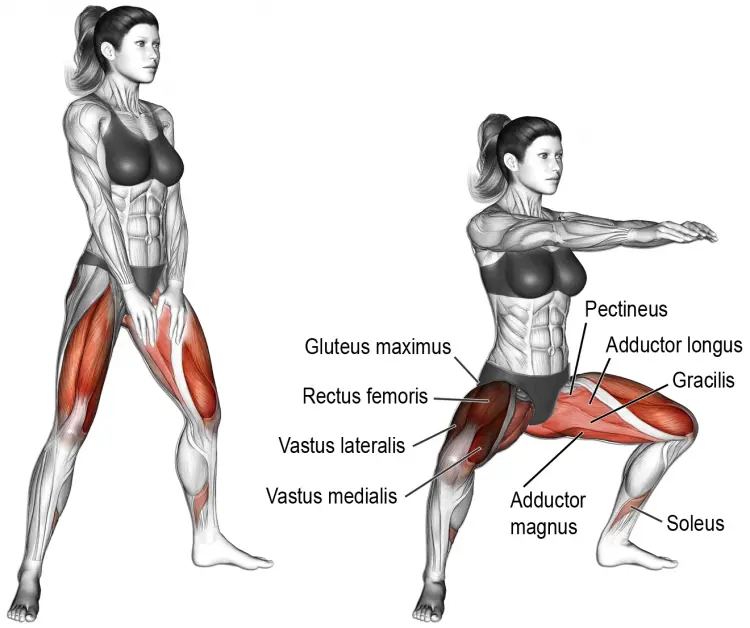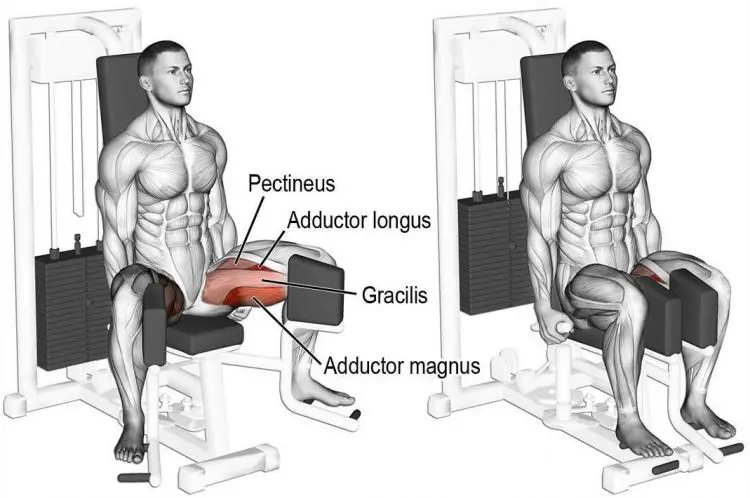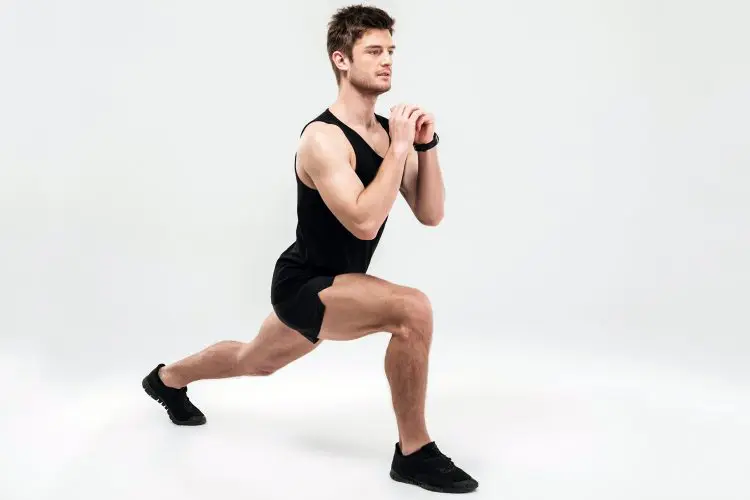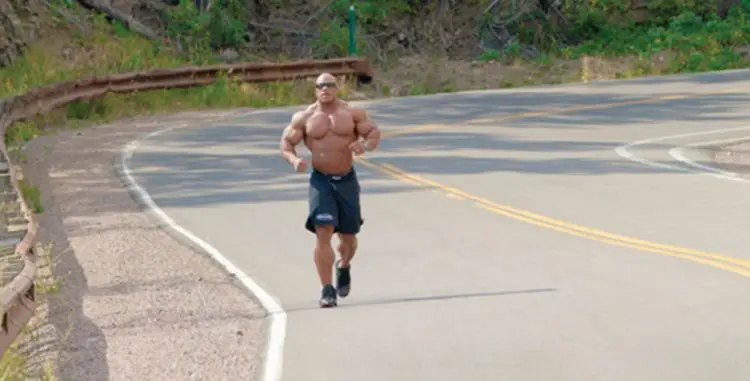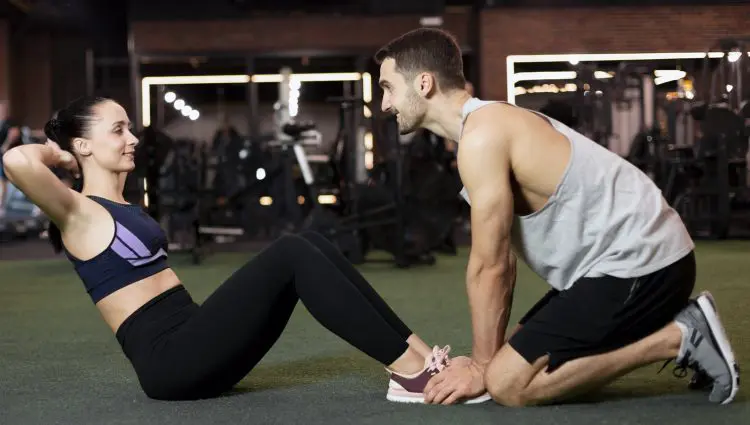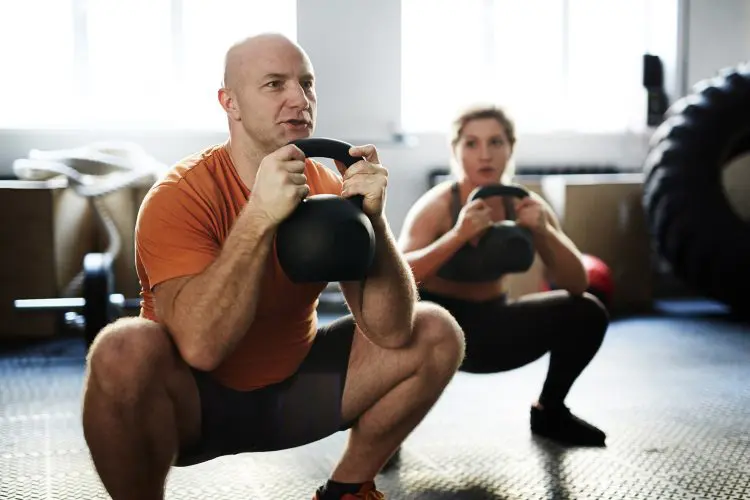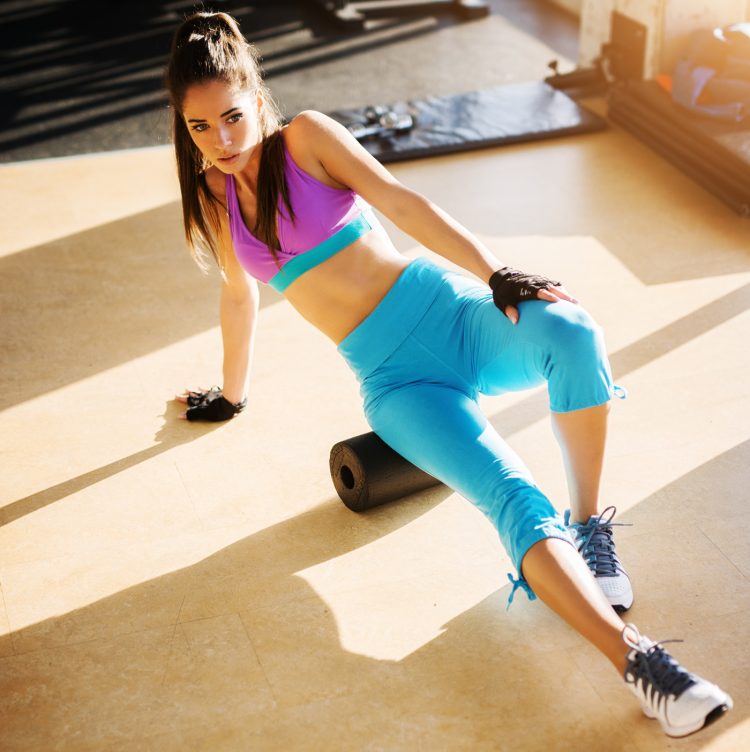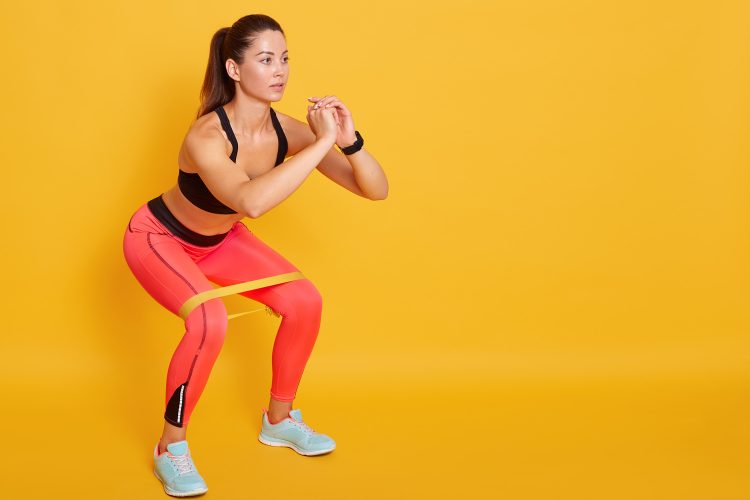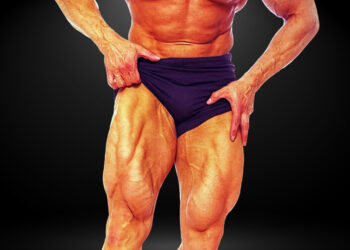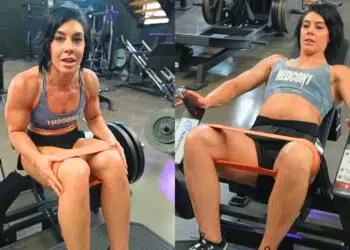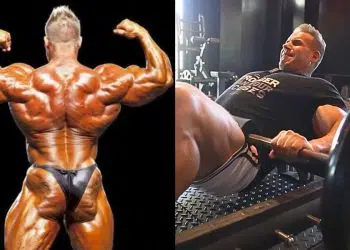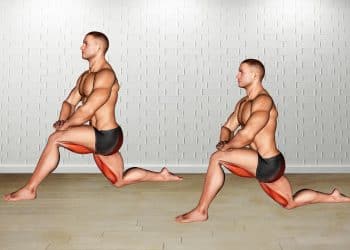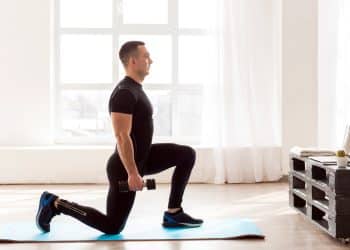Think about your last leg workout; while you might have been focusing on your quads or your hamstrings, your hip joints were working too. That’s also true for most cardio exercises.
It’s actually quite hard to avoid using your hips when you train, even if you’re just walking from one upper body exercise to another. That’s why hip pain can be so debilitating.
The hip is a large and stable joint, capable of supporting huge loads, but it’s far from indestructible and hip pain is surprisingly common. In this article, we’re going to investigate some of the common causes of hip pain and provide you with 13 practical ways to avoid it.
Hip Anatomy 101
The hip joint shares many similarities with the shoulder joint. Like the shoulder, the hip is a ball and socket joint. However, where the shoulder socket is very shallow, the hip socket is much deeper. This increases stability and also means the hip joint is less mobile than the shoulder.
The hip joint is made up of two bones: the femur or thigh bone and the pelvis, which is consists of three bones called the ilium, ischium, and pubis. The head of the femur (femoral head) sits in a depression called the acetabulum.
Level Up Your Fitness: Join our 💪 strong community in Fitness Volt Newsletter. Get daily inspiration, expert-backed workouts, nutrition tips, the latest in strength sports, and the support you need to reach your goals. Subscribe for free!
The articulations and muscles of the hip joint are:
- Flexion– iliopsoas, rectus femoris, sartorius, pectineus
- Extension– gluteus maximus; semimembranosus, semitendinosus, and biceps femoris (the hamstrings)
- Abduction– gluteus medius, gluteus minimus, piriformis and tensor fascia latae
- Adduction– adductors longus, brevis and magnus, pectineus and gracilis
- Lateral rotation– biceps femoris, gluteus maximus, piriformis, assisted by the obturators, gemilli, and quadratus femoris.
- Medial rotation– anterior fibers of gluteus medius and minimus, tensor fascia latae
It is not the aim of this article to identify the cause or nature of existing hip pain. That’s a job for a qualified medical professional. However, some of the conditions that we hope to help you avoid include:
- Strains and sprains – strains affect the muscles while sprains affect the ligaments.
- Osteoarthritis – wear and tear of the hyaline articular cartilage within the hip joint.
- Bone spurs – irregular bone growth within the hip joint.
- Bursitis – inflammation of the fluid-filled sacks that cushion your hip joints.
- Labrum tears – torn cartilage within the socket or on the head of the femur
- Tendonitis – inflamed, swollen tendons.
- Tendonosis– degeneration of the tendons.
13 Ways to Avoid Hip Pain in The Gym
With so many potential hip problems, it goes without saying that preventing hip pain is better than trying to cure it. To that end, here are 13 strategies for avoiding painful hips.
You could also use these methods to train through very mild hip pain and stop it from worsening. However, if your hip pain persists or increases, you should stop training and get it checked out by a qualified medical professional, preferably one who specializes in sports injuries.
1. Warm-up for longer
Your hips are a synovial joint. That means they are lubricated with an oil-like substance called synovial fluid. As well as being a lubricant, synovial fluid nourishes the hyaline cartilage within the joint to keep it healthy.
Synovial fluid is produced on demand and jumping into an intense workout before your joints are fully lubricated could increase joint wear and tear and make your joints feel stiff and creaky.
Protect your joint and enjoy a more productive workout by spending extra time on your warm-up, especially if you have been sedentary beforehand. Do an easy ten minutes of light, non-impact cardio such as cycling, and then spend another five minutes mobilizing your hip joints with movements like leg swings, leg side lifts, and hip circles.
Then, once you feel warm, finish your preparation with a few progressively deeper reps of squats and lunges. This will provide you with an opportunity to see how your hips feel before moving on to your main workout. If your hips still feel stiff, spend a little more time warming up.
[Related: 10 Warm-Up Exercises For Enhancing Deadlift Performance]
2. Stretch your hip flexors
The hip flexors are the collective name for the muscles that pull your femur forward, such as when you kick a soccer ball. The hip flexors are the rectus femoris, which is one of your quadriceps muscles, and the iliacus and psoas major. Tight hip flexors are a common source of hip pain.
Long periods of sitting put your hip flexors in a shortened position. Your body adapts to habitual sitting by making your hip muscles shorter and tighter. If your hip flexors are tight, you won’t be able to extend your hips normally, and if you try to, you will probably strain these key muscles.
Also, tight hip flexors inhibit your gluteus maximus, stopping them from firing correctly and making them weaker. This is called reciprocal inhibition. The glutes are another crucial hip muscle.
Stretching your hip flexors will relax and help restore them to optimal length. This, in turn, will increase your range of motion and reduce your risk of muscle strains.
There are lots of hip stretches to choose from, but the couch stretch is one of the most effective. The best way to fix overly tight hip flexors is to stretch them at least once per day, and preferably more often. After all, sitting in a chair shortens these essential muscles, and stretching them every day will help reduce the effect of prolonged sitting.
3. Train your glutes
The common issue of tight hip flexors can deactivate your glutes, creating an imbalance across the hip joint. As well as stretching the hip flexors, training the glutes can help restore normal, healthy hip function.
Exercises like squats, deadlifts, and lunges all involve the glutes but, if your glutes aren’t working as they should, other exercises may be a better, safer choice. If your glutes aren’t firing correctly, a lot of traditional lower body exercises could cause additional injury, particularly to the lower back.
Fire up your glutes with some targeted isolation exercises, such as:
- Glute bridges
- Barbell hip thrusts and one-legged hip thrusts
- Kneeling cable hip extensions
- Standing cable hip extensions
- Cable pull-throughs
4. Go easy on the sumo squats
Sumo squats are a popular exercise. They increase inner thigh (adductor) activation and are typically done with an upright torso. However, squatting with a very wide stance puts a lot of extra stress on the hip joint and could increase joint capsule wear and tear.
Using a marginally wider than shoulder-width stance probably won’t be detrimental to the health of your hips, but squatting with your feet very wide apart is not recommended. To make matters worse, very wide stance sumo squats aren’t even an especially good inner thigh exercise.
5. Skip the seated hip adductor and abductor machines
While some people can use the hip adductor and abductor machines without issue, these exercises can be a source of hip pain. For a start, both of these exercises involve a large range of motion in the seated position. The combination of hip flexion and adduction/adduction places the hip joint in a biomechanically compromised position.
Also, in nature, the hip adductor and abductor muscles mostly act as stabilizers and not agonists or prime movers. If you want to strengthen your inner and outer thighs, unilateral exercises like step-ups and lunges are usually more effective and more functional.
If you feel you MUST do isolated hip adduction and abduction exercises, do them standing using cables instead of seated. This is easier on your hip joints and makes for a more natural movement.
6. Watch your range of motion during lunges and split squats
Level Up Your Fitness: Join our 💪 strong community in Fitness Volt Newsletter. Get daily inspiration, expert-backed workouts, nutrition tips, the latest in strength sports, and the support you need to reach your goals. Subscribe for free!
If you want stronger, better-shaped legs, lunges can help. Walking lunges, forward and backward lunges, and lateral lunges are all effective unilateral exercises that work your glutes, quadriceps, and hamstrings. Plus, because you’ll have to work extra hard to stabilize your hips, lunges are also useful adductor and abductor exercises.
However, as beneficial as lunges undoubtedly are, done incorrectly, they can be a cause of hip pain. Avoid lunging problems by always bending your back leg and not hyperextending your hip. Keep your rear thigh close to vertical.
This tip should also be applied to Bulgarian split squats. Hyperextending your rear hip does not make lunges or Bulgarian split squats more effective but does increase your risk of hip pain. Remember, your FRONT leg should be doing most of the work.
7. Go easy on the high-impact training (especially if you are a big guy)
High-impact activities like running and jumping put a lot of stress on your joints. People with knee pain are often told to avoid high-impact training. However, those same exercises also put a lot of strain on your hips.
After all, the hip joint ball and socket has to absorb and withstand the same load as your knees. The hip joint IS strong and stable, but it’s still prone to wear and tear.
Show your hips some love by taking it easy on the high-impact training, especially if you are a big guy. Consider making the following changes to your workouts:
- Instead of squat jumps, do box jumps
- Replace running with steep uphill walking
- Instead of sprints, try sledgehammer intervals
Check out this Metcon article for more low-impact exercises and workouts chosen especially for big guys.
8. Try some neoprene support shorts
People with knee pain often wear neoprene knee sleeves, and sleeves can help relieve elbow pain too. Neoprene is highly insulating, will help keep the affected joints warm, and increase localized blood flow and synovial fluid production. Sleeves made from neoprene also provide some added support and stability.
Neoprene support shorts can help prevent and relieve hip pain while keeping your hamstrings and quadriceps warm too.
If your lower body workouts leave your hips feeling battered and sore, try a pair of neoprene shorts. Alternatively, if neoprene is too warm or restrictive, you may find that Lycra compression shorts provide some relief.
9. Stop anchoring your feet for sit-ups and crunches
Sit-ups and crunches are abs exercises. They involve spinal flexion, which is the job of your rectus abdominus. However, when you anchor your feet, most people tend to flex their spines less, and more of the movement is generated by the hip flexors. This is especially true for sit-ups.
The occasional set of sit-ups or crunches with anchored feet probably won’t be an issue, but doing either of these exercises repeatedly could strain your hip flexors.
Take the stress of your hip flexors and make your sit-ups and crunches more abs-centric by not anchoring your feet. Better still, replace these old-school abs exercises with some more effective core exercises that won’t overload your hips, such as Pallof presses, shovel lifts, or single-arm waiter’s or farmer’s walks.
10. Try some blood flow restriction training
If you want to build muscle and get stronger, you need to lift heavy weights, right? But, unfortunately, those same muscle and strength-building weights can be hard on your joints. Years of heavy squats, deadlifts, and lunges can take their toll on your knees AND your hips.
The good news is that you can maintain and even make new progress with blood flow restriction training, or BFR for short. BFR involves training with elasticated bands wrapped above the muscle you want to train. This reduces blood flow into the muscle and makes even light weights much more challenging and productive.
Use BFR training to work your quads and hamstrings without overloading those already overworked hip joints. You don’t have to use BFR all the time, but it’s a useful supplement to heavier workouts when you want to give your joints a break.
11. Do the Slavic/Slav squat
Loosen and open up your hips and break up long periods of sitting with the third-world squat, also known as the Slavic squat. Before chairs were invented, this is how most people rested and worked.
To do this exercise, stand with your feet about shoulder-width apart, toes turned slightly outward. Takes your shoes off for the whole third-world experience (and to increase ankle mobility).
Squat down as far as you can and place your upper arms inside your legs. Push your legs apart with your arms to open and stretch your hips. Keep your chest up and look straight ahead.
Hold this position for 30-60 seconds, gradually increasing up to several minutes. You should find that not only does this exercise help loosen your hips, but your squatting depth improves too.
12. Foam roll your hips
Foam rolling is a form of deep tissue massage. But, for this therapy, you don’t need to visit a sports injury specialist; you can do it yourself. Also known as self-myofascial release, foam rolling helps free up the fascia surrounding your muscles, eliminates knots, restores lost flexibility, and improves blood flow.
To use a foam roller, position your body so that the area you want to treat is on top of the roller. Support some of your weight on your arms. Carefully roll the full length of the target muscle, taking care to avoid any bony prominences.
Don’t be surprised if you experience some localized pain – this is entirely normal. If you come across any “hot spots,” just stop the roller on that area and wait for any tension to melt away.
You can use a foam roller on the inside, front, back, and outside of your hips. Just position your body accordingly.
13. Use but don’t abuse booty bands
Booty bands are a very useful tool. They allow you to work your hip abductors while you do a range of leg exercises, such as squats, hip thrusts, and Romanian deadlifts. They’re also useful for firing up your glutes before a hard and heavy lower body workout, increasing hip stability and general workout performance.
However, as useful as booty bands are, a lot of exercisers abuse them by using them too much. I’ve seen some exercisers wear booty bands for the entirety of their workouts, usually because they are trying to spot reduce fat from their hips or outer thighs.
By all means, do a few sets of booty band squats or hip thrusts to wake up or work your glutes a little harder than usual, but don’t fall into the trap of using one all the time. This could lead to shortened, overdeveloped hip abductors and could lead to muscle and joint pain.
Wrapping Up
Hip injuries and joint pain can be very debilitating. Not only can it affect your ability to squat, lunge, and leg press, it can quickly become so severe that your lower body workouts are limited to nothing but leg extensions and curls. Glute training? Forget about it! Hip pain can even turn simple tasks like walking into a painful, miserable experience.
Use the strategies in this article to help prevent hip pain or give any minor problems a chance to heal. But remember, if your hips don’t start to get better soon or are getting worse, you should seek medical advice.

